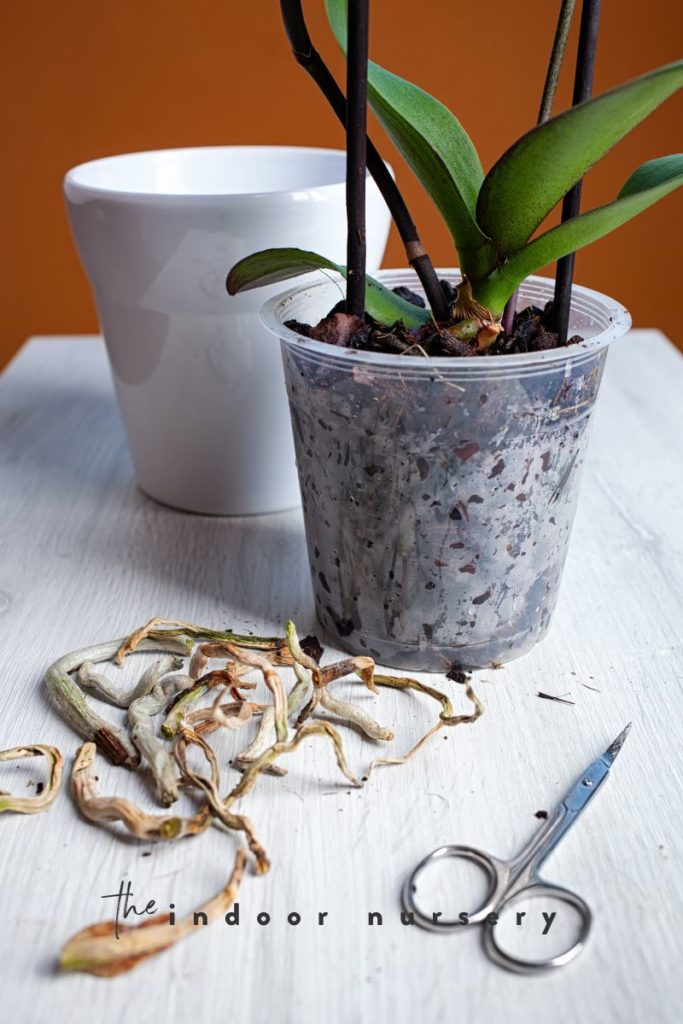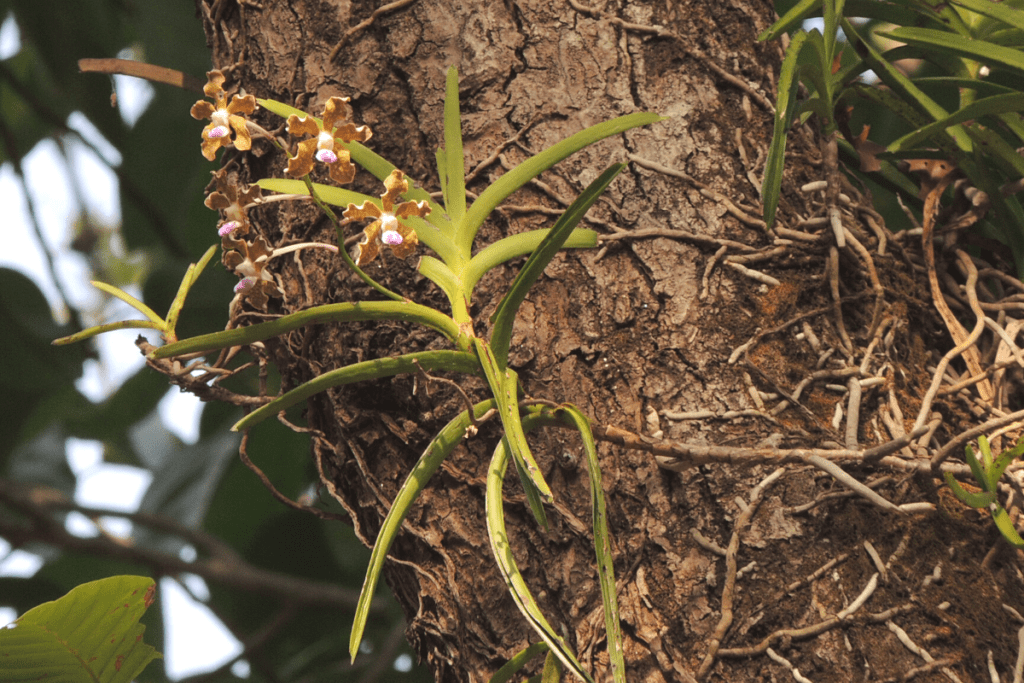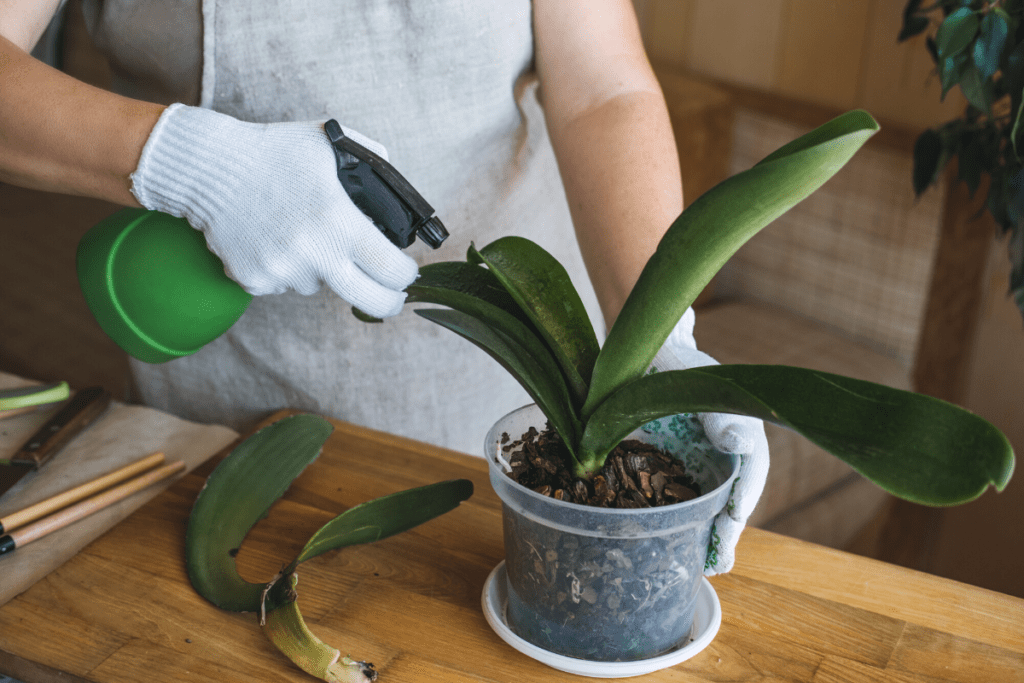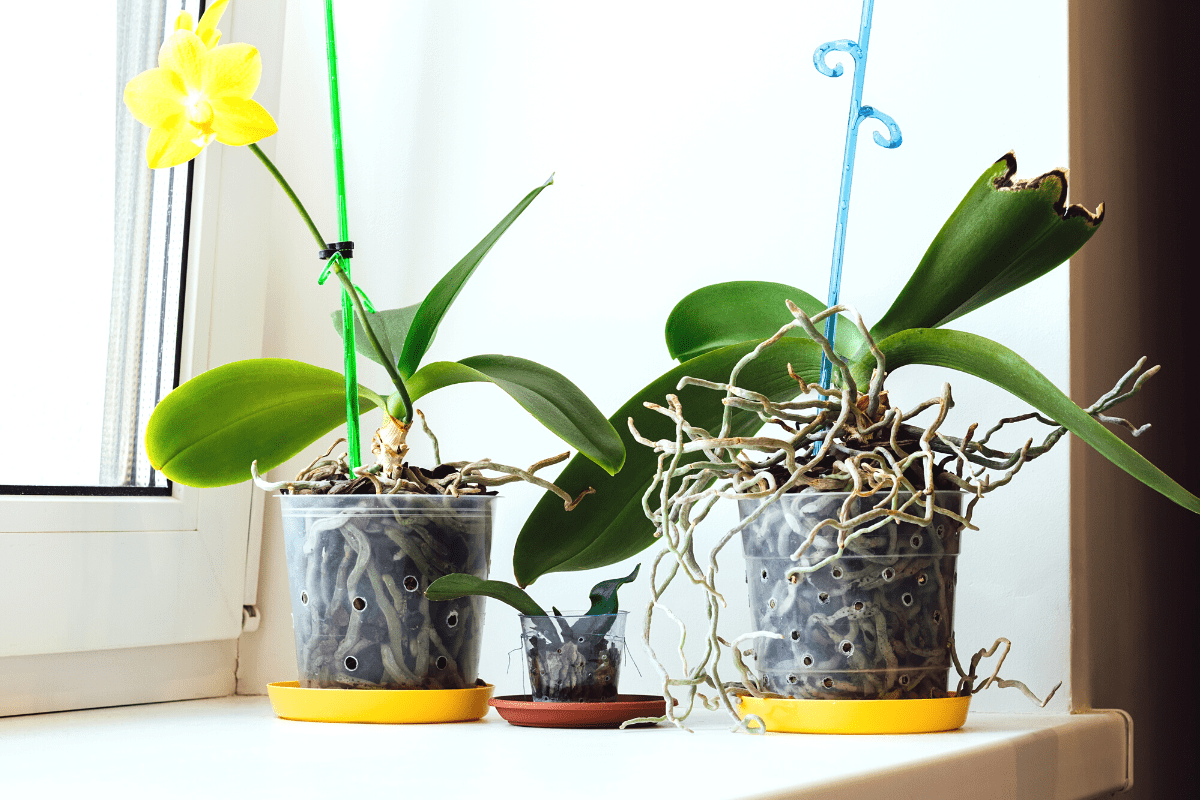Thinking about using ice cubes to water orchids? You might want to think again.
While watering orchids with ice cubes is indeed an easy way to drip-feed a fussy plant… it’s not exactly what they want.
BUT!! (there’s always a but 🍑)
That doesn’t mean you can’t do it! It also doesn’t mean that it will do any harm to your orchid plants. Isn’t that the way the internet works?? lol
So I’m going to review all of the current studies on this method, both good and bad. I’ll present the different arguments as well and even teach you how to water orchids with ice cubes. I’m gonna do it alllllll in this post.
That way, you have all of the fact-based information right in one tidy package and then you can decide which is best for you and your orchid babies!
Understanding the ice cube method for watering orchids
The Ice Cube Method for watering orchids is a technique that has gained popularity due to its simplicity and purported effectiveness. The method involves placing three ice cubes on the orchid’s potting medium once a week, allowing them to slowly melt and gradually water the plant. This approach aims to prevent overwatering, a common issue that can lead to root rot and other leaf and root health problems in orchids.

The idea behind this method is that the slow melting of the ice provides a controlled amount of water, reducing the risk of overwatering.
However, this method is not universally accepted among orchid enthusiasts and experts (✨drama✨), who prefer traditional watering methods. Some argue that the cold temperature of the ice can be harmful to the tropical nature of orchids, which are accustomed to warm, humid environments, not the cold drip of melting ice cubes.
While the ice cube method might provide enough water to keep the orchid alive, it may not provide the optimal conditions for the plant to thrive. Since orchids thrive with exposed roots in an extremely airy medium, like sphagnum moss or orchid bark media, a cold ice cube doesn’t seem like the right vibe.
Think about it: Orchids in their natural habitat experience warm, torrential rains, and their roots are exposed to a lot of air and moisture. The ice cube method may not adequately replicate these conditions, potentially leading to a slow decline in the plant’s health over time.

So, while the Ice Cube Method can be a convenient way to water your orchids, especially for beginners, it’s helpful to understand its potential drawbacks and consider other watering methods that might better suit the needs of these beautiful tropical plants.
My take? Give it a try and see how your orchid plant likes it 🙂
I have personally had the best success with a spray bottle filled with room temperature filtered water. About once a week I spritz the entire plant and roots until it’s covered with beads of water that drip down the plant… just like you might see happen in a misty jungle.

The science behind watering orchids with ice cubes
So what does the science actually say about watering orchids with ice cubes?
The good news: According to a study published in the Journal of the American Society for Horticultural Science, watering orchid plants with ice cubes did not negatively affect plant health or flower count. But some experts argue that the cold temperature of ice can be harmful to these tropical plants, which are accustomed to warm environments.
The researchers conducted three experiments to see if watering orchids with ice cubes was harmful or beneficial.
In the first experiment, they found that whether you water orchids with ice cubes or water, it doesn’t really affect how long the flowers last. They also found that the amount of water that wasn’t absorbed by the plant (the leachate) was either the same or less when using ice cubes compared to water.
In the second experiment, they wanted to see at what temperature the orchid roots would get damaged. They found that the roots started to show signs of damage when the temperature dropped below -7°C (19.4°F).
In the third experiment, they measured the actual temperature of the orchid’s roots when in direct contact with an ice cube. They found that the temperature dropped to around 4.6°C (40.28°F) within 15 minutes and then gradually increased.
One thing that people might be interested to know is that this comprehensive study did find that watering orchids with ice cubes can lead to lower leaf temperatures… and potentially harmful conditions for the plant.
The verdict? Watering orchids with ice cubes doesn’t seem to harm the plant or affect how long the flowers last. Orchid roots can handle temperatures as low as -7°C, and when in direct contact with an ice cube, the temperature only drops to around 4.6°C. So, it seems like the orchids are pretty chill with being watered with ice cubes!
Debunking myths about watering orchids with ice cubes
Firstly, the idea that ice watering will kill them is a common misconception. A study conducted by researchers at The Ohio State University and the University of Georgia compared watering orchids with ice to using a traditional watering method. They found the same flower longevity, display life, leaf yield, and root systems in both sets of orchids. This means watering with ice had no negative impact.
Secondly, some people argue that watering orchid plants with ice cubes is unnatural. While it’s true that orchids are tropical plants that thrive in hot, humid climates, it’s important to remember that your home is not an orchid’s natural habitat either. 🙃 When the ice cubes melt, it mimics the slow drip of water from leaves in tropical climates where most orchids grow.
Lastly, the notion that ice watering is just a marketing scheme is unfounded. The truth is, one of the most common threats to an orchid is overwatering. The ice cube watering method was developed to make it easier for customers to care for and keep their orchids alive longer by ensuring their orchid receives just the right amount of water — no more, no less.
Surprisingly, watering orchids with ice cubes is a research-backed method that can help prevent overwatering and promote the health and longevity of your orchid.
How to water an orchid with ice cubes: a step-by-step guide
Watering orchids with ice cubes is a method that has gained popularity due to its simplicity. The science also shows that’s it’s not really that harmful, either.
But we also know that this orchid care method is not universally accepted among horticultural experts and may not be the best long-term watering strategy for your orchid’s health.
That being said, if you choose to use this method to water orchids, then here’s a step-by-step guide:
- Choose the Right Orchid: Not all orchids may respond well to this method. Moth orchids (Phalaenopsis), the most common type of orchids sold in stores, are often the ones recommended for ice cube watering.
- Prepare Your Ice Cubes: The typical recommendation is to use three ice cubes per week. This amount is designed to provide minimal water and prevent overwatering, a common issue with orchid care.
- Apply the Ice Cubes: Place the ice cubes on top of the potting media, not directly on the orchid itself. As the ice melts, it will slowly release water that seeps down into the media.
- Monitor Your Orchid: Keep an eye on your orchid’s health. If you notice any signs of distress, such as yellowing leaves or wilting, reconsider the ice cube method.
For a more natural approach to watering your orchids, consider methods that mimic the humidity of their tropical habitat, such as misty watering with room-temperature water. Using a spray bottle with purified water at room temperature about once a week has given me the best results with my orchids.
This can help ensure your orchid thrives and blooms beautifully for years to come.
How often and how many ice cubes to use for your orchid
When it comes to watering your orchid with ice cubes, the frequency and quantity can vary depending on the type of orchid and its specific needs.
The study mentioned earlier suggests using three ice cubes, or about 2 tablespoons of water, once a week. This method was found to be sufficient for maintaining the health of certain types of orchids, such as Phalaenopsis orchids, in a controlled environment.
In fact, the title of the study says it all! “Ice Cube Irrigation of Potted Phalaenopsis Orchids in Bark Media Does Not Decrease Display Life” 👍
Other houseplants that can benefit from the ice cube method
While the ice cube watering method has been popularized for orchids, it’s important to note that this method may not be suitable for all houseplants. After all, according to the mentioned earlier, the same ice cube irrigation method can potentially harm the root system of orchids.
However, this doesn’t mean that the ice cube method is entirely off the table for all houseplants. It can be a useful technique for those who tend to overwater their plants, as it provides a controlled amount of water that slowly seeps into the soil, reducing the risk of root rot. This method could be beneficial for certain types of succulents and cacti, which require minimal watering.
Always research and consider the natural habitat and watering needs of your plant before deciding on a watering method. While the ice cube method can be a handy tool in some cases, it’s not a one-size-fits-all solution.
Final thoughts
Here’s to caring for a happy, healthy orchid! As long as your orchid has glossy green leaves and can produce some flowers, I’d say you’ve found the right watering method 🙂 Let me know what works for your orchids in the comments!
More about watering plants
- How Often To Water Dracaena (Including Snake Plants)
- How to Use Leca for Plants: Step-by-Step Guide with Pictures
- How To Save An Overwatered Snake Plant
- How Often To Water Pothos Plants (And When To Cut Back)
- How Often To Water Monstera Plants
- 11 Plants That Don’t Need Drainage And How To Care For Them
- Save Your Overwatered Monstera In 4 Steps (And How Not To Do It Again)

